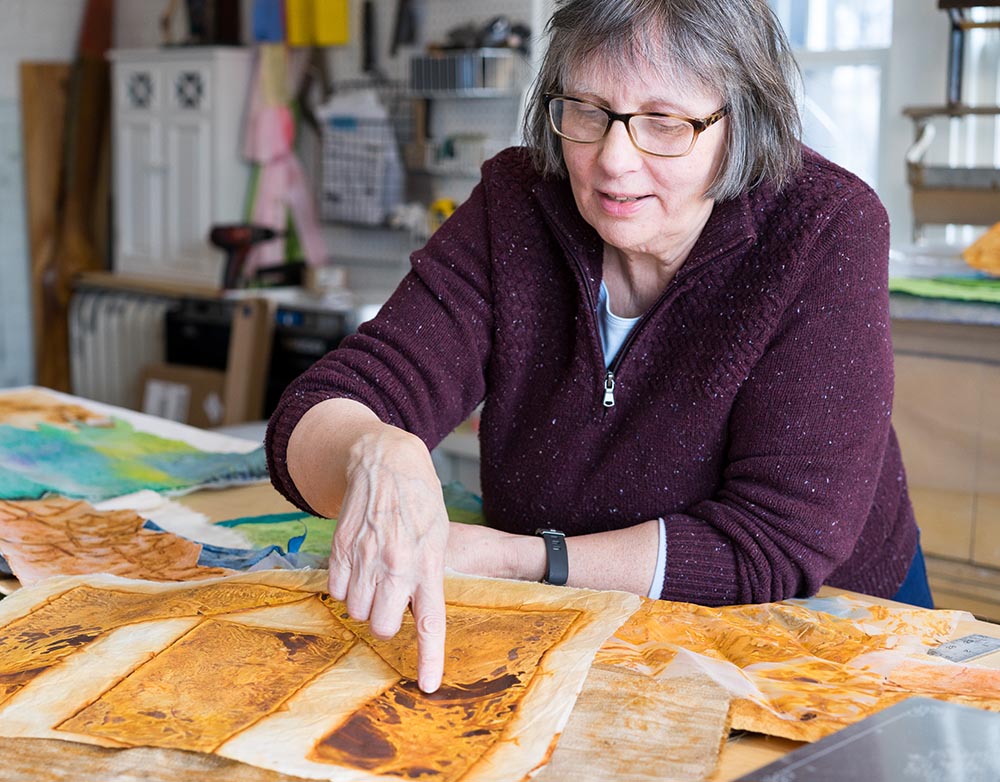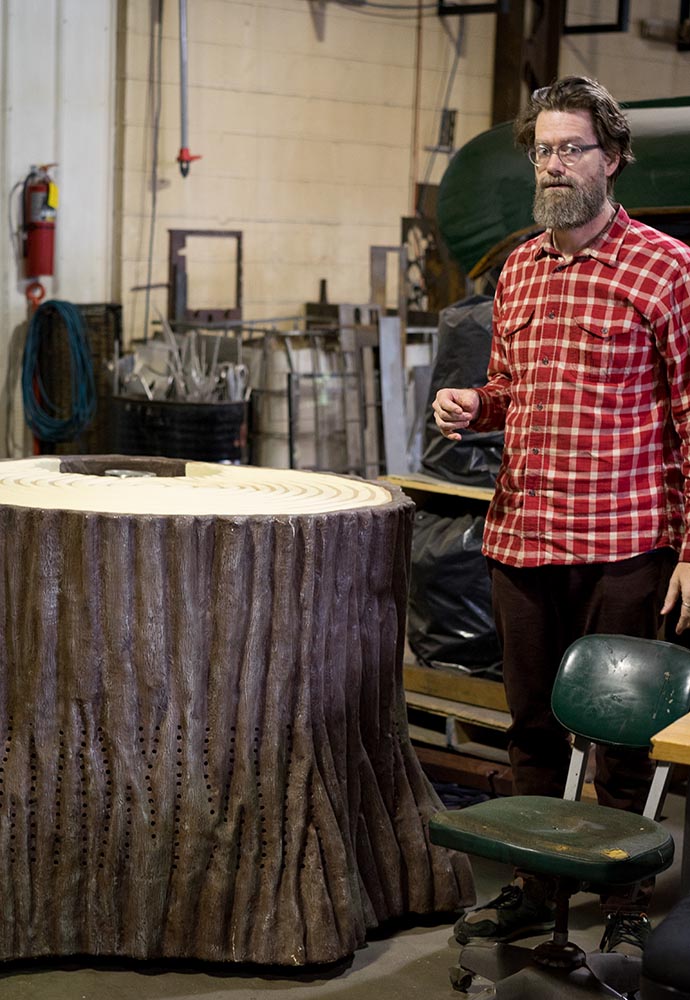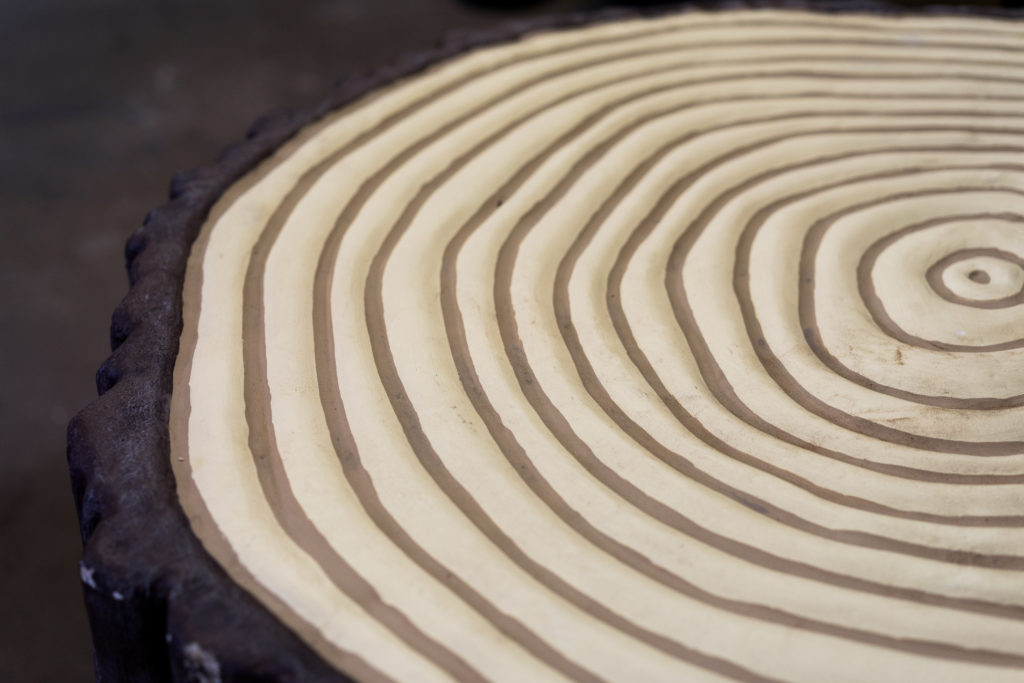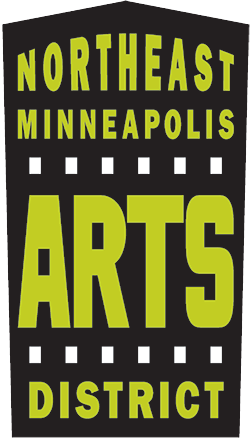Many of the most famous artists of all time specialized in depictions of nature: think Claude Monet’s lily pads or Vincent Van Gogh’s olive trees. But in addition to a rich history of art inspired by earth’s beauty, artists have long used their craft to draw attention to the plight of our planet and spark environmental action. Two artists in the Northeast Minneapolis Arts District shared how they use the themes of their artmaking to encourage a deeper environmental connection and consciousness.

Art that visualizes the science
An environmental focus emerged slowly and personally for California Building fiber artist Deborah Foutch. For most of her childhood, her father worked for the Soil Conservation Service, talking with Iowa farmers about soil and water. When her father died, she began making fiber depictions of soil horizons, with deep roots growing down into layers of soil. The topmost layer of soil, Foutch said, is called “living soil” because “if you scoop up a handful of that soil, there are more things alive in your hand than there have ever been humans on the planet.”
Her work of personal remembrance of her father took on new significance when, on display at the Minnesota State Fair, it began to spark conversation about soil. “I was thrilled; this was a continuation of my father’s work.” Her artwork was directly visualizing the science of soil—and as a result, she began to meet farmers and others interested in soil and watershed conservation.
The more Foutch studied the science, the more alarmed she became. Modern monocrop and chemical farming practices have rapidly depleted the fertility of our soil, Foutch explained. Fields are fully plowed in the fall, leaving the soil vulnerable to erosion and barren of the deep-rooted prairie plants that hold water in the soil. If we don’t change how we’re farming, Foutch said, we have roughly 40 years of good soil left.
“My first instinct was to run tell all these farmers ‘Stop! You’re doing it wrong!’.” But then she recalled her father’s example. “He didn’t go point fingers; he told stories.” Her father emotionally connected the work of farming with the science of conservation. As farmers commissioned her soil horizons for community conversations about regenerative farming practices, she realized her art held that same power. “Farmers share the science better than I could, but I’d brought this beautiful visual story into the middle of the conversation.”
Another artist whose art has helped make abstract scientific concepts highly visible is Aaron Dysart. A sculptor based in the Northeast Sculpture Factory Gallery, Dysart has long employed the physicality of objects to make unseen science more visible. His 2021-2022 installation Passage programmed ten years of carbon emissions and sequestration data into nylon tubes (or “noodle dancers”) with airflow and lights that changed color to visualize the otherwise invisible data. In another installation, Soap Boat, Dysart cast a 600 lb. rowboat from soap and rowed it down the Mississippi, using the public spectacle to advocate for cleaning up the river.
Art that holds the emotion of climate change

Beyond illustration, Dysart said art leaves room for ambiguity and contradiction where science can’t. “Art can hold pain and loss in one hand and joy in the other.” When you’re working with scientific realities that are truly horrible, he said, “despair can become so great; you need to find ways to psychologically handle that.” Dysart has frequently worked with tree forms, and the stump has become his metaphor for loss. His recent work Regrowth, commissioned by Green Minneapolis and the Mississippi Watershed Management Organization for The Great Northern Festival, featured a stump with a green noodle dancer sprouting from the top, signifying both its death and its potential regrowth.
Dysart said he’s always a little amused when people tell him how “natural” his tree forms look, given how heavily worked they are. He said he wrestles with the ecological impact of some of his materials and processes, particularly with public artworks that need to meet safety and durability standards. “I could switch to fully natural materials, but the art wouldn’t last.”

Sometimes the point is to create art that doesn’t last; Dysart once put a set of “soap stones” in a field and filmed as a rainstorm washed them away. He said he chose soap as a metaphor for cleaning up the environment, but also because it can be made entirely out of byproducts. (He consulted with ecologists to ensure the soap he used didn’t harm the fields.) But he described how, as he began to watch the storm roll in, he experienced a profound ego-check; far more humbling than the manufactured and climate-controlled environment of a gallery space, this show wasn’t on his own terms; this was art made in direct relation to nature.
A more interconnected way
There is a funny way of looking at climate change either as a systemic catastrophe beyond the control of individuals—or as fully dependent on the personal responsibility of individuals. And at a deeper level, Dysart said our egoistic way of referring to “nature” as something separate from ourselves is part of the problem, especially when it assumes that we humans know best.
Both Dysart and Foutch demonstrate an alternative to these false dichotomies—a more interconnected way. Their individual art practices have been driven not by distance from nature, but by a close attention and relationship to their surroundings. And in expressing this cherished relationship through art, each has worked collaboratively with other people. Foutch put it this way: “I didn’t know any farmers before. Now I know many.” Perhaps it Is fitting that in our attempts to relate to the natural world, we also end up relating more tenderly to each other.
Article and Photography by Katherine Boyce
